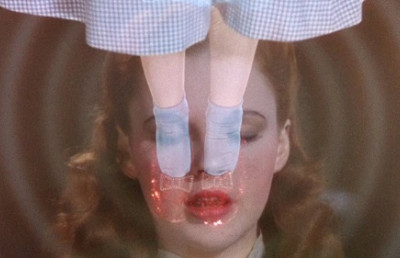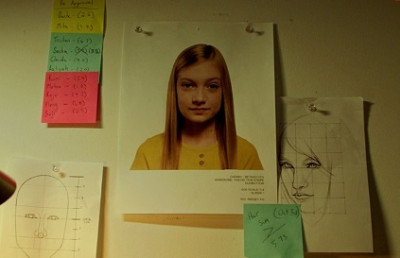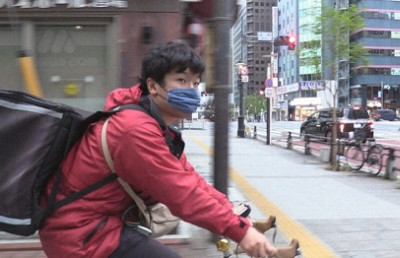Unsane and the Consequences of Gaslighting
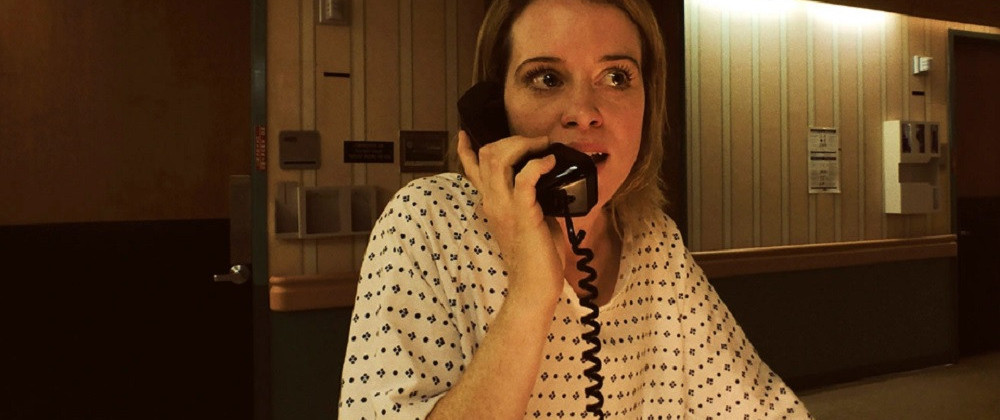
I love it when you wear blue. I mean, I love you in anything, but you wore blue that first time I saw you, so anytime I see you in blue it reminds me of how I felt at that moment. Now I never really knew what being alive was until I saw you. You unlocked something inside me that day – something I didn’t even realise was there. And right then I knew that nothing in my life was ever gonna be the same. In that moment, I was transformed permanently. You did that.
Delivered as voiceover narration, these are the opening lines of dialogue in Unsane (2018), Steven Soderbergh’s 28th narrative feature film (out of 34, as I write this) and second after his brief hiatus (initially described as retirement) from filmmaking. These lines are accompanied by a tracking shot through a forest. The image is completely cast in blue, as befits the content of the brief opening monologue – which, despite its brevity, is striking even out of context for its uneasy position between sounding sincere and sounding fabricated, between having a sinister effect and an affectionate one. This responsive ambiguity is determined by the absence of a second voice, or even a clear, designated listening audience other than the film’s spectator. Adding to this uncertain relationship between speaker and audience is the unspecified male voice’s use of the pronoun “I” eleven times and “you” eight times, in only seven short sentences. Unsane’s opening breaths establish an uncomfortable split priority of a speaker wanting to communicate how much someone else means to them, but only being able to do so by justifying the position of that “you” on the terms of an “I.”
As the film’s title sequence ends and its story properly begins, any sense of ambivalence or parity quickly subsides for a very specifically one-sided, preferential, and unjust experience of gaslighting. It is the experience of the person being addressed in this opening monologue, inflicted on them by the person speaking. Sawyer Valentini (played by Claire Foy) is being addressed by David Strine (Joshua Leonard), a stalker whose constant harassment leads to Sawyer moving away from her home in Boston and 450 miles away from everyone she knows, as her mother reminds her in a video call early on in the film. Sawyer takes this call on her lunch break at her new job, the professional setting for which we immediately cut to after the film’s title sequence. Sawyer can be seen in a claustrophobic office cubicle and is captured only in medium shots and close-ups until Soderbergh cuts to an establishing aerial shot of the full office space. The heavy emphasis on mediums and close-ups is maintained throughout Unsane’s ninety-eight-minute runtime and this pattern is inseparable from the fact of this production: Soderbergh shot the film entirely on the iPhone 7 Plus, a feat he replicated in his next feature film, High Flying Bird (2019).
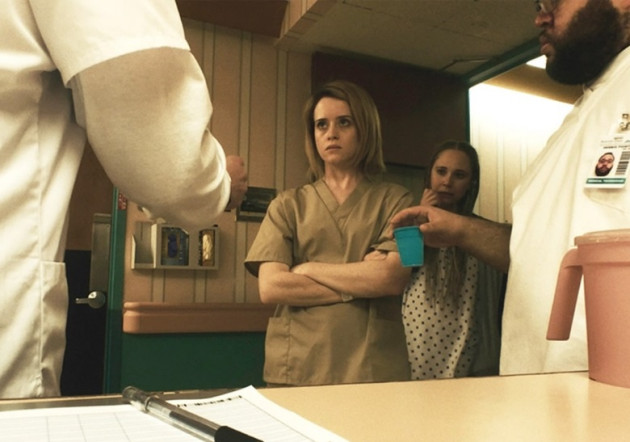
This scene’s spatial confinement is enhanced by the need for close-ups that comes with the iPhone, contradicting the liberating, enjoyable work atmosphere Sawyer unconvincingly tells her mother her new job has. The video call generates a sense of conversational restriction to match the confinement of the corporate building, and it also anticipates the later narrative revelation that Sawyer has not told her mother about the stalker and why she has really moved to Boston. To her face on a screen, Sawyer tells her mother that her new, male boss is “great”, which comes after a scene in which she is invited into this boss’ office to be told that “you’re gonna do really well here.” Her boss asks her if she wants to attend a vague, undefined work conference with ostensibly only him, to which Sawyer says “I’m gonna need a little more experience”, referring to how little time she has spent in the new job. Her boss follows up with the subtly horrifying line “I can help you with that”, delivered while chuckling to himself.
Ignoring this earlier exchange, likely because she has been hardwired to brush these kinds of interaction under the carpet, Sawyer selectively describes the new job to her mother in corporate speak, using buzz words like a “competitive” company philosophy and a positively “demanding” work environment. Both inside her place of work and out in the open air (where she takes the call), both in conversation with her family and with those she barely knows, Sawyer’s interactions are impulsively filtered and subconsciously controlled by her experience of trauma – a continual, undiminished experience despite her move to another part of the country, which is quickly capitalised on precisely because of the disorientation that comes with this geographical move. After seeing a counsellor at Highland Creek Behavioral Center about her adjustment and struggle, Sawyer is manipulated as part of an elaborate health insurance claim scheme and unknowingly signs a consent form for voluntary 24-hour admission to the locked psychiatric hospital. She is then held against her will at Highland Creek for a further seven days, where staff go to lengths trying to indoctrinate her into believing that she is crazy, which in her particular context of a history of unwanted, predatory male harassment takes on a new level of urgent commentary surrounding the topic of consent. Soderbergh’s film puts the idea of gaslighting – its irrational conditions and dangerous consequences – front and centre, which ultimately transcends the film’s technical innovation in order to contribute to vital contemporary conversations about denying consent and perpetuating abuse towards women.
The scene that leads to Sawyer’s captivity at Highland Creek again mines the attributes of the iPhone, emphasising her stifling enclosure in the counsellor’s office but also in the conversation with that counsellor. As Sawyer tells her, “I’m alone, in a strange city, and I never feel safe, not for one minute.” Sawyer also repeats the line “I’m not rational”, an externalisation of what her treatment by her stalker has tricked her into believing, despite its untruth. Soon the discussion moves to whether Sawyer has had suicidal thoughts, which she responds to calmly, with composure, telling the counsellor that yes, she has had fleeting ones, before touching on how she would take her own life if she were to do so (as an entirely abstract possibility). The air is sapped from the room the longer the conversation goes on, with Soderbergh’s phone-camera exacerbating the tension by shooting everything up close, often face-on. The counsellor’s facial expressions and body language judge Sawyer’s comments more than her profession permits her to, reducing the nuance of what Sawyer is saying to the fact of even talking about suicide, a topic which the counsellor of course brought up in the first place. The meeting ends and Sawyer is hurriedly instructed to fill in what she is assured are merely “boilerplate” forms that she is led to believe will simply get her further counselling sessions. Before Sawyer can process what is happening, she is ushered to hand the signed forms back in and is soon called out by a doctor in all white (the antithesis of the counsellor’s smart wear) and asked to follow him. Next, Sawyer changes hands and is told to strip to her underwear by a nurse, her indications that “There’s nothing wrong with me” and suggestions that “I really need to get back to work” falling on deaf ears.
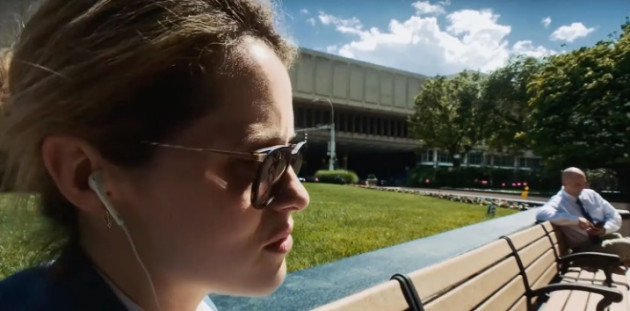
Sawyer’s time at Highland Creek aggravates her experience of gaslighting. “I really need to get back to work” is superseded by the refrain “I shouldn’t even be in here”, which she tells anyone in earshot – staff members, fellow patients, etc. Equally, her meetings with the head doctor in his office see the line “to be continued” be repeated, just not by her. The head doctor’s mechanic repetition of the line almost suggests that Highland Creek’s nexus of corporate manipulations is fraying at the edges, indicating that the machine is malfunctioning. Malfunction and dysfunction take most of the film to transform into the potential for Sawyer’s freedom, though. After run-ins with other patients and with the doctors administering the drugs that she does not need, Sawyer is told by this head doctor that “because of the multiple acts of violence, we’re looking at another seven days”, an intensification of why he says she was admitted to Highland Creek in the first place. This reason is crystallised into document form, evidence that, as he tells Sawyer, “You’ve been assessed as a danger to yourself and to others.”
Sawyer’s agency is reduced to pieces of paper with information dictating her ability to function within this community. She is told by an ally on the inside – Nate (Jay Pharoah), who is eventually tortured with a defibrillator and killed with an overdose of fentanyl when it is found out that he is becoming close to Sawyer – that the only way out is to pay her way out. Sawyer relays this information to her mother, who she is finally able to get through to after initially wasting her daily phone call allowance on the police, who staff tell her are used to getting unhinged calls from this address often, so systematically disregard them as “from crazy people” (as Sawyer herself puts it, desperately distinguishing herself from others at Highland Creek). During a brief in-person visit, Sawyer tells her mother that “they’re locking up sane people, for profit”, verbalising an awareness that she is being exploited for her capital despite being unable to prevent this from happening.
This feedback loop of gaining knowledge of what is happening to her while generating a deeper understanding of how powerless she is peaks when Sawyer realises that her stalker from her life outside and before Highland Creek is masquerading as a doctor at the facility. Soderbergh’s film swiftly dissolves any ambiguity over whether Sawyer is imagining him or not, because Unsane is on her side, as her side is the only one and that is rational and deserving of empathy. Again, this narrative revelation comes in the form of confirmatory, damning information on a piece of paper: David Strine, under the alias George Shaw, shows Sawyer an envelope with her name and address on it when, shocked and appalled, she sees him at the front of the queue for medicine. Strine’s reveal is strategically discrete, with no one else at the hospital able to see the piece of paper as he shows it to Sawyer. It is Strine (as Sawyer calls him) who kills Nate, and who later visits Sawyer in padded, soundproof solitary confinement in the basement after her various misdemeanours, a setting which facilitates his private and obsessive proclamations of his love for Sawyer. He disturbingly tells her that he knows everything about her, including her favourite book, favourite song, and desire to visit Portugal. He also informs her of his plans to help her get out of the institution if she will live with him at his cabin.
Sawyer’s second way out will not cost her financially but will sacrifice her independence, then. It is the choice of being a slave to the capitalist self-interests of the state or being the owned object of a singular and singularly deranged man. So, Sawyer forges a third way out in two steps. First, she feigns being victim to Stockholm syndrome and tells Strine that they can “start over […] We’ll go out for drinks, get to know each other”, sealing the deal by persuading him to bringing Violet (another patient, played by Juno Temple, who has antagonised Sawyer during the film up to this point) down to the basement so Sawyer can watch them have sex, because Sawyer wants to be his second. Next, when Violet is down there, Sawyer pulls out Violet’s shiv (a Chekhov’s gun introduced when Sawyer first arrived at Highland Creek) and stabs Strine with it in the neck and flees as he kills Violet. The plan is derailed when he recaptures Sawyer outside and knocks her unconscious. She wakes up in the trunk of his car next to her mother’s corpse but jumps from the moving car and flees into the woods, where Strine catches up with her, breaking her ankle with his hammer before she slashes his throat in retaliation. Unsane has gone full circle and returned to the setting of its introductory, unsettling voiceover narration; that (at the time) indeterminate, incessant voice has been replaced with the silence after a very specific, justified, definitive action of killing a predator before it could kill its prey.
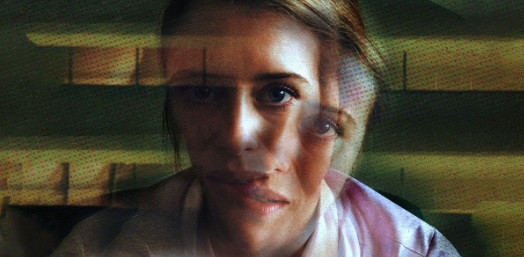
This dichotomy of a full circle trajectory yet a pronounced shift from powerlessness to power, from being unable to prevent oneself from being a victim to taking action against that victimisation, asks the question of what the consequences of Sawyer’s gaslighting therefore are. What are the consequences when the predator has irrevocably been taken out of the picture? After this ending, the film jumps forward six months to an epilogue where, despite everything, Sawyer seems to have settled into a normal life. But Sawyer confuses a random person at a diner for Strine – an active contradiction of the unambiguous earlier treatment of her learning of his arrival at Highland Creek – and Unsane shows the extent to the psychological damage that has been done. Sawyer was convinced by others that she was insane for long enough that she can never be completely stable again, despite being stable at the time when she was convinced that she was unstable. In Soderbergh’s film, her specific experience of exploitative gaslighting without consent has seen her transformed her into a bit of information on a piece of paper, a file in a corporate scam’s database, and most damagingly a sexual object. After all, Strine’s harassment of her derived from a desire to have her body to himself, but it is also Sawyer’s body that offers the only way to survive at Highland Creek – through Violet’s by proxy in the build up to her escape, or when Sawyer needs to use her own after getting a pivotal early means of communication with her mother by offering to perform oral sex on Nate in exchange for borrowing his phone.
The consequences of the events in Unsane for its protagonist see her escape one confined space only to be let out into another: a world that necessitates always having her guard up, that warrants a defence against others’ exploitation of her body. We see this early in the film when Sawyer goes on a Tinder date and must immediately establish the ground rules. She tells this man that yes, she consents to sleeping with him, but he must never contact her ever again. He can share her body, but only because she says so, and not for a second longer than she gives him permission to. Ultimately, there are limitations and restrictions to Sawyer’s ability to sexualise herself because exploitation lies in waiting. She must plan fifty moves ahead, all the time, but even this cannot stop trauma from preventing her date from progressing any further than a kiss. In this early scene, Sawyer panics and tells her date to leave and her plan – formulated well in advance, communicated with meticulous, strict instructions – must be torn up and thrown out of the window. Trust is impossible after what Strine has done to her life. The consequences of gaslighting, for Sawyer and for so many women, is that once the process begins there is no end to it. It deceptively poses as an indirect mode of persecution. It is a method of harassment that can deceptively adopt the implicit rather than the explicit. But it is unimaginably harmful.




